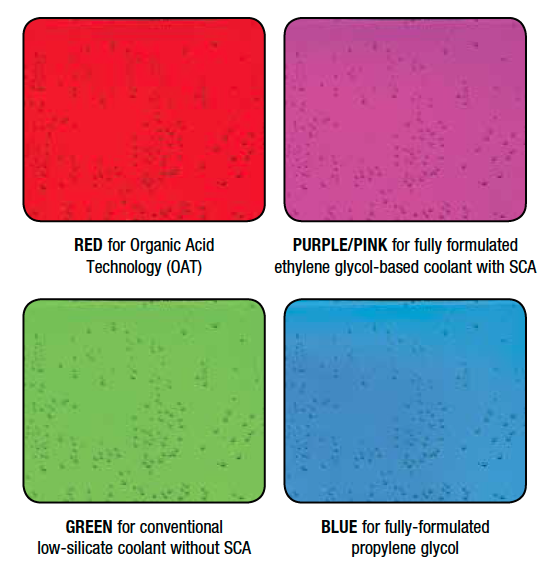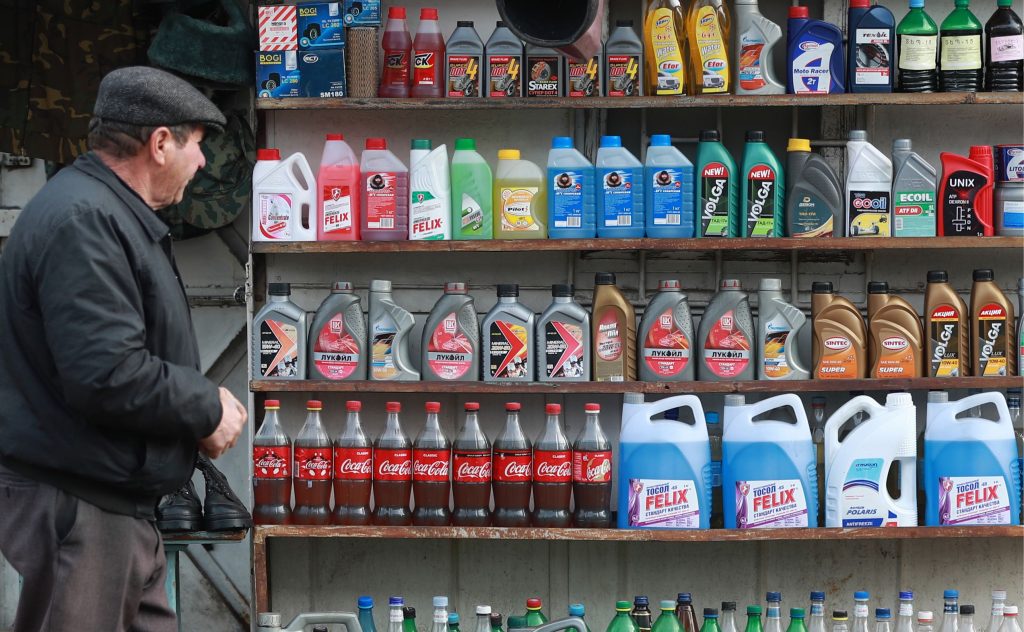

If the oil was accidentally contaminated by water, you could change the oil and the problem should cease. There’s a slim chance that the creamy oil isn’t a head gasket failure. Don’t prolong getting the problem repaired, or you could end up with even larger repair bills. Additionally, it can cause white smoke to come from the exhaust and the engine could overheat. You may also notice a creamy buildup on the oil filler cap. To repair this, you have an expensive repair bill ahead of you. In most cases, this oil type indicates that the head gasket has blown, allowing coolant to leak into the oil. If the oil is frothy and milky-looking, you have some issues to deal with immediately.
Engine coolant color chart how to#
READ MORE: How to Change the Oil in Your Car (5 Easy Steps) 3.

If the oil isn’t clinging to the dipstick, chances are everything is fine and you can continue driving. Depending on what additives you are using, the color could be slightly darkened.

However, if the engine oil is darker but thin, it could be normal. As the dirt builds up in the oil, it gets darker and thicker. Most likely, it’s time to change the oil. When the engine oil gets dark brown or black, it could be normal, or there could be something wrong. However, you will want to continue checking it to ensure nothing is changing. If you see amber oil on the dipstick, you are safe to keep driving for a while yet. The closer it is to that color, the better. The best oil looks the same color as when you put it in the engine. In fact, this is the color you want it to be. AmberĪs we’ve discussed, amber-colored motor oil is perfectly normal. RELATED: Transmission Fluid Color Chart (5 Different Colors) Dipstick Oil Color Chart 1. This guide is better suited for gas engines. However, if you have a diesel engine, the engine oil can become black quite fast after an oil change, so with diesel engines, it’s better to follow the maintenance schedule. The fact that it becomes darker shows that it’s doing exactly what it’s supposed to. The longer you go without an oil change, the darker the oil becomes. Over time, motor oil absorbs combustion by-products that lead to contamination. Still, immediately following an oil change, it should remain amber for a good amount of time. Depending on what additives you use, the oil could be a little darker and may darken faster. To this end, various antifreezes have been formulated to try to combat these problems with different aims and different levels of success.How Often is Oil Change Needed? What Color Should Oil Be On Dipstick?Įngine oil can appear in multiple shades of amber, based on what type you are using and how old your vehicle is. Namely, it freezes in low temperatures, boils at a relatively low temperature, and often speeds rust & corrosion in mechanical parts. Now, water’s great at taking on heat and giving heat off, but it also has some undesirable properties when it comes to cooling mechanics. You’ll often hear of high-tech things being “liquid cooled” – which sounds super fancy but is actually just a case of pumping water-based coolant through pipes in order to warm the water up and take that heat away from the thing you want to cool. They should really be called “engine regulant” or something official-sounding like that because their job is twofold: to stop engines getting too hot in the summer, and to stop them getting too cold in the winter. While they often go by different names, antifreeze and engine coolant are the same thing.


 0 kommentar(er)
0 kommentar(er)
